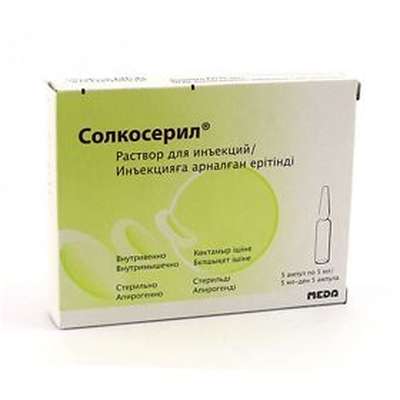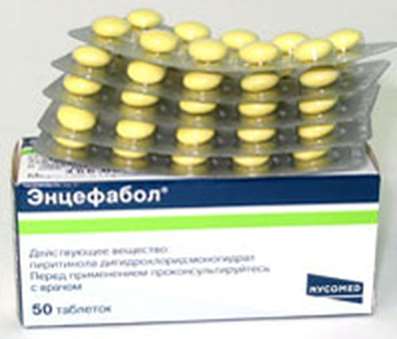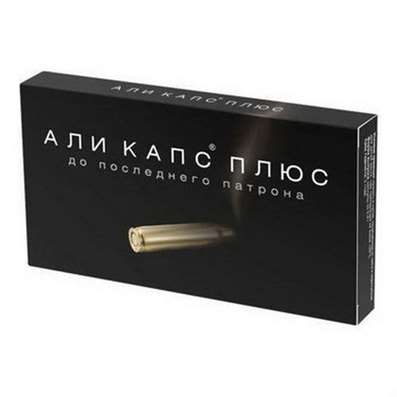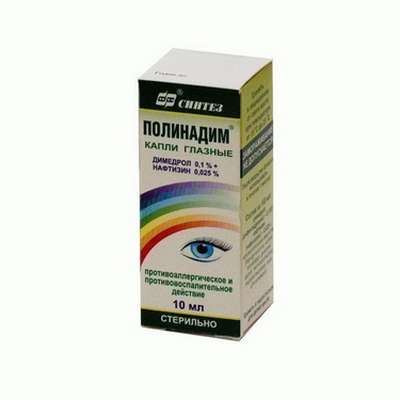Instruction for use: Ascophenumum-P
I want this, give me price
Active substance Acetylsalicylic acid + Caffeine + Paracetamol
ATX Code N02BA71 Acetylsalicylic acid in combination with psycholeptics
Pharmacological group
Analgesic non-narcotic agent (non-steroidal anti-inflammatory agent + analgesic non-narcotic agent + psychostimulating agent) [NSAIDs - Salicylic acid derivatives in combinations]
Nosological classification (ICD-10)
G43 Migraine
The pain of migraine, Migraine, hemiplegic migraine, Migraine headache, A migraine attack, Continuous headache, hemicranias
K13.7 Other and unspecified lesions of oral mucosa
Aspirin burn of the oral mucosa, Gum pain when wearing dentures, Inflammation of the mouth, Inflammation of the oral mucosa, Inflammation of the oral mucosa after radiation therapy, Inflammation of the oral mucosa after chemotherapy, Inflammation of the oral mucosa, Inflammation of the mucous membranes of the mouth, Inflammatory diseases of the oral cavity, Inflammatory process of pharynx, Disease of the oral mucosa, Injuries to the oral cavity and larynx, Injuries of the oral mucosa, Trophic diseases of the oral mucosa, Erosive-ulcerative periodontal disease, Erosive-ulcerative lesion of the oral mucosa, Erotic mucous membrane of the oral cavity, Erotic-ulcerative periodontal lesions, Erotic-ulcerative lesions of the oral mucosa, Radio-epileleitis, Irritation from dental prostheses, Irritation of the oral mucosa with dentures and braces, Oral cavity, When wearing dentures
M25.5 Pain in the joint
Arthralgia, Pain syndrome in musculo-articular diseases, Pain syndrome in osteoarthritis, Pain syndrome in osteoarthritis, Pain syndrome in acute inflammatory diseases of the musculoskeletal system, Pain syndrome in chronic inflammatory diseases of the musculoskeletal system, Pain in the joints, Soreness of the joints, Soreness of joints in severe physical exertion, Painful inflammatory joint damage, Painful conditions of the musculoskeletal system, Painful joint conditions, Painful traumatic affection of joints, Pain in the musculoskeletal system, Pain in Shoulder Joints, Pain in the joints, Joint pain, Joint pain with injuries, Musculoskeletal pain, Pain with osteoarthritis, Pain in the pathology of the joints, Pain in rheumatoid arthritis, Pain in chronic degenerative bone diseases, Pain in chronic degenerative joint diseases, Bone-joint pain, Joint pain, Arthritic pain of rheumatic origin, Articular pain syndrome, Joint pain, Rheumatic pain, Rheumatic pains
M79.1 Myalgia
Myofascial pain syndromes ,Pain syndrome in musculo-articular diseases, Pain syndrome in chronic inflammatory diseases of the musculoskeletal system, Pain in the muscles, Tenderness of muscles, Muscular soreness in severe physical exertion, Painful conditions of the musculoskeletal system, Pain in the musculoskeletal system, Pain in the muscles, Pain at rest, Muscle aches, Muscle pain, Musculoskeletal pain, Myalgia, Muscle pain, Muscle pain at rest, Muscle pain, Muscular pain of non-rheumatic origin, Muscle pain of rheumatic origin, Acute muscle pain, Rheumatic pain, Rheumatic pains, Myofascial syndrome, Fibromyalgia
M79.2 Neurology and neuritis, unspecified
Pain syndrome with neuralgia, Brachialgia, Occipital and intercostal neuralgia, Neuralgia, Neuralgic pain, Neuralgia, Neuralgia of intercostal nerves,Neuralgia of the posterior tibial nerve, Neuritis, Neuritis traumatic, Neuritis, Neurological Pain Syndromes, Neurological contractures with spasms, Acute neuritis, Peripheral neuritis,Post-traumatic neuralgia,Severe pain of a neurogenic nature, Chronic neuritis, Essential neuralgia
N94.6 Dysmenorrhea Unspecified
Pain during menstruation, Functional disorders of the menstrual cycle, Menstrual cramps, Emmeniopathy, Pain during menstruation, Painful menstrual irregularities, algomenorrhea, algomenoreya, Pain smooth muscle spasm, Pain spasm of smooth muscles (renal and biliary colic, intestinal spasms, dysmenorrhea), Pain spasm of smooth muscles of internal organs (kidney and biliary colic, intestinal spasms, dysmenorrhea), Disalgomenoreya, dysmenorrhea, Dysmenorrhea (essential) (Exfoliative), menstrual disorder, menstruation painful, metrorrhagia, Violation of the menstrual cycle, Menstrual irregularities, Prolaktinzavisimoe menstrual disorders, Prolaktinzavisimoe menstrual dysfunction, Pain spasm of smooth muscles of internal organs, Spasmodic dysmenorrhea, Primary disalgomenoreya
R50 Fever of unknown origin
Malignant hyperthermia, Hyperthermia malignant
R51 Headache
Pain in the head, Cephalgia, Pain with sinusitis, Pain in the back of the head, Painful headache, Headache of vasomotor genesis, Headache of vasomotor origin, Headache with vasomotor disorders, Headache, Neurological headache, Serial headache
R52.2 Other constant pain
Pain syndrome, rheumatic origin, Pain at vertebral lesions, Pain in the chamber, Pain for burns, Pain syndrome weak or moderate, Perioperative pain,Moderate to severe pain, Moderately or weakly expressed pain syndrome, Moderate to severe pain, Ear pain of otitis, Neuropathic pain, neuropathic pain
Composition
Tablets 1 table.
active substances:
Acetylsalicylic acid 200 mg
paracetamol 200 mg
caffeine 40 mg
auxiliary substances: potato starch; povidone (PVP low molecular weight medical); stearic acid; talc; calcium stearate; silicone emulsion Κέ-10-12; vaseline oil VGM-30M
Description of dosage form
White or white tablets with a creamy or pinkish hue, flat cylindrical with a facet and a risk without odor or with a faint smell. Marble is allowed.
pharmachologic effect
Pharmacological action - anti-inflammatory, antipyretic, analgesic, psychostimulating.
Pharmacodynamics
Ascophenumum-P - a combined drug, the effect of which is determined by the components that make up its composition.
Acetylsalicylic acid has an analgesic, antipyretic, anti-inflammatory effect associated with the suppression of COX-1 and -2, which regulate the synthesis of PG; inhibits the aggregation of platelets.
Caffeine increases the reflex excitability of the spinal cord, excites the respiratory and vasomotor centers, dilates the blood vessels of skeletal muscles, brain, heart, kidneys, reduces platelet aggregation; reduces drowsiness, a feeling of fatigue, increases mental and physical performance.
Paracetamol has an antipyretic, analgesic effect.
indications
moderately or poorly expressed pain syndrome (headache, toothache, neuralgia, myalgia, thoracic radicular syndrome, lumbago, arthralgia, algodismenorea, migraine) in adults;
decrease in fever, with colds and other infectious and inflammatory diseases in adults and children over 15 years of age.
Contraindications
hypersensitivity to acetylsalicylic acid or other NSAIDs or xanthines;
hypersensitivity to other components of the drug;
erosive and ulcerative lesions of the gastrointestinal tract (in the phase of exacerbation), gastrointestinal bleeding;
marked violations of the liver or kidneys;
asthma induced by the use of acetylsalicylic acid, salicylates and other NSAIDs;
hemorrhagic diathesis (von Willebrand's disease, hemophilia, telangiectasia, hypoprothrombinemia, thrombocytopenia, thrombocytopenic purpura);
exfoliating aortic aneurysm;
deficiency of glucose-6-phosphate dehydrogenase;
portal hypertension, vitamin K deficiency;
increased excitability, sleep disturbance, anxiety disorders (agoraphobia, panic disorder);
organic diseases SSS (acute myocardial infarction, severe course of coronary heart disease, arterial hypertension), paroxysmal tachycardia, frequent ventricular extrasystole;
glaucoma;
surgical interventions accompanied by bleeding;
children's age till 15 years.
With caution: hyperuricemia, urate nephrolithiasis, gout, peptic ulcer and / or duodenal ulcer (in the anamnesis), heart failure of severe degree.
pregnancy and lactation
Contraindicated in pregnancy during the I and III trimester, in the second trimester of pregnancy, one-time intake of the drug at recommended doses is possible only if the expected benefit for the mother does not exceed the potential risk to the fetus.
If it is necessary to use the drug during lactation, breastfeeding should be stopped.
Side effects
Anorexia, nausea, vomiting, gastralgia, diarrhea, erosive-ulcerative lesions of the digestive tract, gastrointestinal bleeding, hepatic and / or renal insufficiency, increased blood pressure, tachycardia.
Allergic reactions: skin rash, Quincke's edema, bronchospasm.
With prolonged admission - dizziness, headache, visual disturbances, tinnitus, reduced platelet aggregation, hypocoagulation, hemorrhagic syndrome (epistaxis, bleeding gums, purpura, etc.), renal damage with papillary necrosis; deafness; Stevens-Johnson syndrome, toxic epidermal necrolysis (Lyell syndrome), Reye's syndrome in children (metabolic acidosis disorders of the nervous system and psyche, vomiting, liver dysfunction).
Interaction
Strengthens the action of heparin, indirect anticoagulants, reserpine, steroid hormones and hypoglycemic agents. Reduces the effectiveness of spironolactone, furosemide, antihypertensive drugs, anti-arthritis agents that promote the excretion of uric acid.
Increases the side effects of SCS, sulfonylureas, methotrexate, non-narcotic analgesics and NSAIDs.
Avoid combination of the drug with barbiturates, antiepileptic drugs, zidovudine, rifampicin and alcohol-containing beverages (increases the risk of hepatotoxic effect).
Under the influence of paracetamol, the time of chloramphenicol elimination is increased by 5 times.
Caffeine accelerates the absorption of ergotamine.
Salicylamide, and other stimulators of microsomal oxidation contribute to the formation of toxic metabolites of paracetamol, which affect liver function.
Metoclopramide accelerates the absorption of paracetamol. With repeated admission, paracetamol can enhance the effect of anticoagulants (dicumarin derivatives).
Dosing and Administration
Inside, after eating. On 1-2 table. 2-3 times a day. The maximum daily dose is 6 tablets. The interval between doses should be at least 4 h.
To reduce the irritant effect on the GIT, the drug should be taken after meals, washed down with water, milk, alkaline mineral water.
If there is a violation of the kidney or liver function, the break between doses is not less than 6 hours.
The drug should not be taken more than 5 days when prescribed as an anesthetic and more than 3 days - as an antipyretic. Other dosages and regimens are prescribed by the doctor.
Overdose
Symptoms: nausea, vomiting, stomach pain, sweating, pale skin, tachycardia. With light intoxication - ringing in the ears; severe intoxication - drowsiness, collapse, convulsions, bronchospasm, shortness of breath, anuria, bleeding. As the intoxication intensifies, progressive paralysis of respiration and dissociation of oxidative phosphorylation cause respiratory acidosis. If you suspect a poisoning, you should immediately seek medical help.
Treatment: gastric lavage, the appointment of adsorbents (activated charcoal).
special instructions
With continued use of the drug, control of peripheral blood and the functional state of the liver is necessary. Since acetylsalicylic acid has an antiaggregant effect, the patient, if he is to undergo surgery, must warn the doctor in advance about taking the drug.
Acetylsalicylic acid in low doses reduces the excretion of uric acid. This can in some cases provoke a gout attack.
During treatment, you should stop using alcohol-containing beverages (increased risk of gastrointestinal bleeding).
Acetylsalicylic acid has a teratogenic effect: when applied in the first trimester of pregnancy leads to malformations - the cleavage of the upper palate; in the third trimester - causes inhibition of labor (inhibition of PG synthesis), closure of the arterial duct in the fetus, which causes hyperplasia of the pulmonary vessels and hypertension in the vessels of the small circulation.
Acetylsalicylic acid is excreted in breast milk, which increases the risk of bleeding in the child due to a violation of the function of platelets.
The drug is not prescribed as an anesthetic for people under 18 years of age, as an antipyretic agent - children under 15 years of age with acute respiratory infections caused by viral infections because of the danger of developing Reye's syndrome (encephalopathy and acute fatty liver dystrophy with acute development of liver failure).
Form of issue
Pills. 10 tab. In a contiguous cell-free or cell pack, 1, 2 or 3 contourcell packagings for use in a pack of cardboard. The contiguous cells or cells without cells are placed in a group package.

 Cart
Cart





